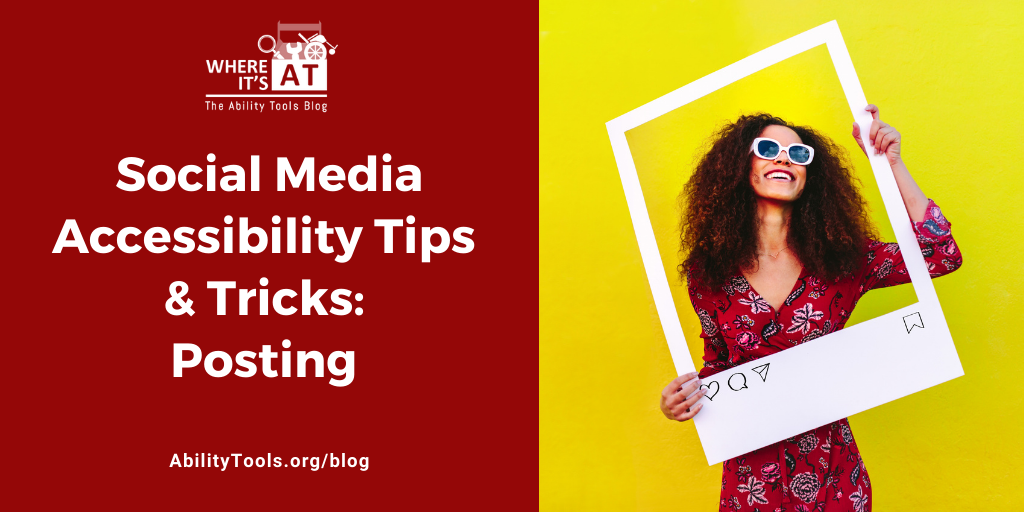Whether sharing a new photo, commenting on current affairs, uploading a funny video, or promoting your business’s newest venture, social media is only relevant because people want to make connections. However, these connections can break down if posts aren’t accessible. The Where It’s AT Blog team is here to help, so you can feel confident that your posts will reach everyone.

Keep language in your posts short and to the point.
Use Plain language whenever possible. Plain language is a writing style that makes reading an accessible activity for everyone, including people with intellectual and developmental disabilities or those with learning disabilities. You can learn more about how to write in plain language by visiting ThePlainLanguage.gov Plain Language Guidelines page.
Avoid quickly flashing GIFs, as these can not only be disorientating and make it difficult to focus for individuals with sensory or processing disabilities, they can also, in some instances, be seizure-inducing for people who have epilepsy.
Limit the use of all-caps or avoid them altogether as they might be misinterpreted by screen readers and are a less accessible option for people with learning and cognitive disabilities like dyslexia.
Add alt-text to your image in your posts for more detail for blind or low-vision users. Just remember, to keep it as simple as possible and to covey, succinctly, what is able to be visually understood from the image.
Add captions to posts in addition to alt-text for more clarity and better context for all users. Don’t duplicate alt-text content in the caption, build onto it.
Avoid emoticons, whenever possible. When a screen reader encounters an emoticon, it has difficulty understanding and conveying the meaning behind the series of text characters. Rather, use emojis, as when a screen reader encounters an emoji, it reads the assigned meaning of the emoji to the person using the screen reader. For example, a thumbs-up emoji might read as ‘Thumbs-up” to someone using a screen reader.
Use CamelCase in your hashtags by capitalizing the first letter in each word to make it easier to read. This also allows screen readers to pronounce the hashtags properly for those who utilize them (i.e., #DisabledAndProud vs #disabledandproud).
Always include captions, or transcripts, with your videos. Additionally, share your YouTube video in a post, as a status update, so users will have access to your captioned video, plus this will help increase your YouTube video views and gain subscribers.
Don’t use ‘click here’ as a call-to-action when promoting registration, events, or subscriptions. Instead, use text such as: “Register here…” “Visit us at…”. Screen readers are able to use the tab function to click through all of the available links on a page, with the screen reader reading out the hyperlinked text and providing the option to follow the link. By outlining what the hyperlink will do, like, “Click here to register for the next Ability Tools training or event”, screen readers are able to listen for the links they might want to visit, and rather than hearing a repetitive chorus of “Click here”, with no indication of where “here” is, they get a full description of where the links will take them.
Use appropriate color contrast of 4.5:1 in your graphic images and infographics as recommended by the Web Content Accessibility Guidelines (WCAG). Without proper color contrast, people who are colorblind might not be able to process your images. There are free color contrast checkers online, such as Color Safe or Color Contrast Analyzer.
Don’t place text over an image without a properly contrasted solid background to ensure your text is able to be read.




